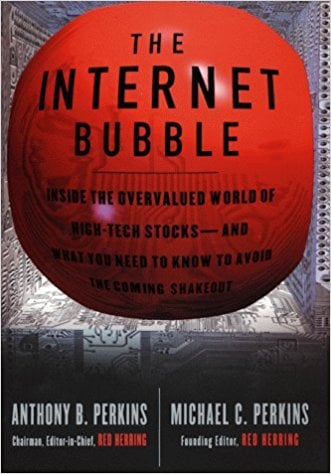Russell Napier’s Lecture on Financial History (60 minutes)
https://event.on24.com/eventRegistration/console/EventConsoleApollo.jsp?&eventid=1568744&sessionid=1&username=&partnerref=&format=fhaudio&mobile=false&flashsupportedmobiledevice=false&helpcenter=false&key=7381A6A8D270C66A75C736D44257317E&text_language_id=en&playerwidth=1000&playerheight=650&overwritelobby=y&eventuserid=190902439&contenttype=A&mediametricsessionid=156958791&mediametricid=2247562&usercd=190902439&mode=launch
A good lecture on integrating past lessons into today’s current conditions.
A CFA composite book on Financial History: Financial History CFA Institute
If you do study financial history like the period of the Internet Boom then collect books and articles from many perspe
ctives AND look at supply as well as demand. Also, incentives rule.
For example, read several books from different perspectives and the history of interest rates, the history of commodity prices, other equities, interest rate spreads, etc.
The Internet Bubble by Anthony B. Perkins, Michael C. Perkins
An analysis of the world of e-business takes a close look at the business models, trends and technological innovations that have paid off and the many that have not.
Dot.Con: The Greatest Story Ever Sold by John Cassidy
When Vannevar Bush, Franklin D. Roosevelt's chief scientific adviser, sat down in 1945 to write a magazine article about the future, he had no idea what he was beginning. Bush's vision of a desktop computer that would contain all of human knowledge inspired the scientists who built the Internet. In the early 1990s, when a British computer programmer devised the World Wide Web and an Illinois student invented an easy-to-use Web browser, the Internet was transformed from a scientific curiosity into the biggest gold rush since the Klondike.
In Dot.con, John Cassidy, one of the country's leading financial journalists and a staff writer at the New Yorker, relates the stories of Netscape, Yahoo!, America Online, Amazon.com, and other Internet companies, large and small. In a lively and entertaining narrative, Cassidy traces the rise of Internet stocks and the development of a populist stock market culture to the end of the Cold War. He shows how an unscrupulous alliance of entrepreneurs such as Jeff Bezos, venture capitalists such as John Doerr, stock analysts such as Mary Meeker, and investment bankers such as Frank Quattrone helped turn an exciting technological development into an unstable and dangerous speculative bubble.
Cassidy doesn't restrict his attention to Silicon Valley and Wall Street. He demonstrates how many prominent journalists and policy makers helped to expand and prolong the bubble, particularly Alan Greenspan, the chairman of the Federal Reserve.
But in the end, Cassidy concludes, responsibility for the Internet boom and bust cannot be placed on any one individual. It was a nationwide epizootic that involved tens of millions of Americans. And now that it is over, the country as a whole is paying a heavy price for succumbing to greed and wishful thinking. An artful blend of storytelling, history, and economics, Dot.con provides the first complete and authoritative account of the biggest financial story of the modern era.
A History of Interest Rates, Fourth Edition (Wiley Finance) by Sidney Homer, Richard Sylla
A History of Interest Rates presents a very readable account of interest rate trends and lending practices over four millennia of economic history. Despite the paucity of data prior to the Industrial Revolution, authors Homer and Sylla provide a highly detailed analysis of money markets and borrowing practices in major economies. Underlying the analysis is their assertion that "the free market long-term rates of interest for any industrial nation, properly charted, provide a sort of fever chart of the economic and political health of that nation." Given the enormous volatility of rates in the 20th century, this implies we're living in age of political and economic excesses that are reflected in massive interest rate swings. Gain more insight into this assertion by ordering a copy of this book today.
Article by CSInvesting








